Canyon Aeroad CFR Disc Di2 review
The brand new Aeroad improves in almost every area
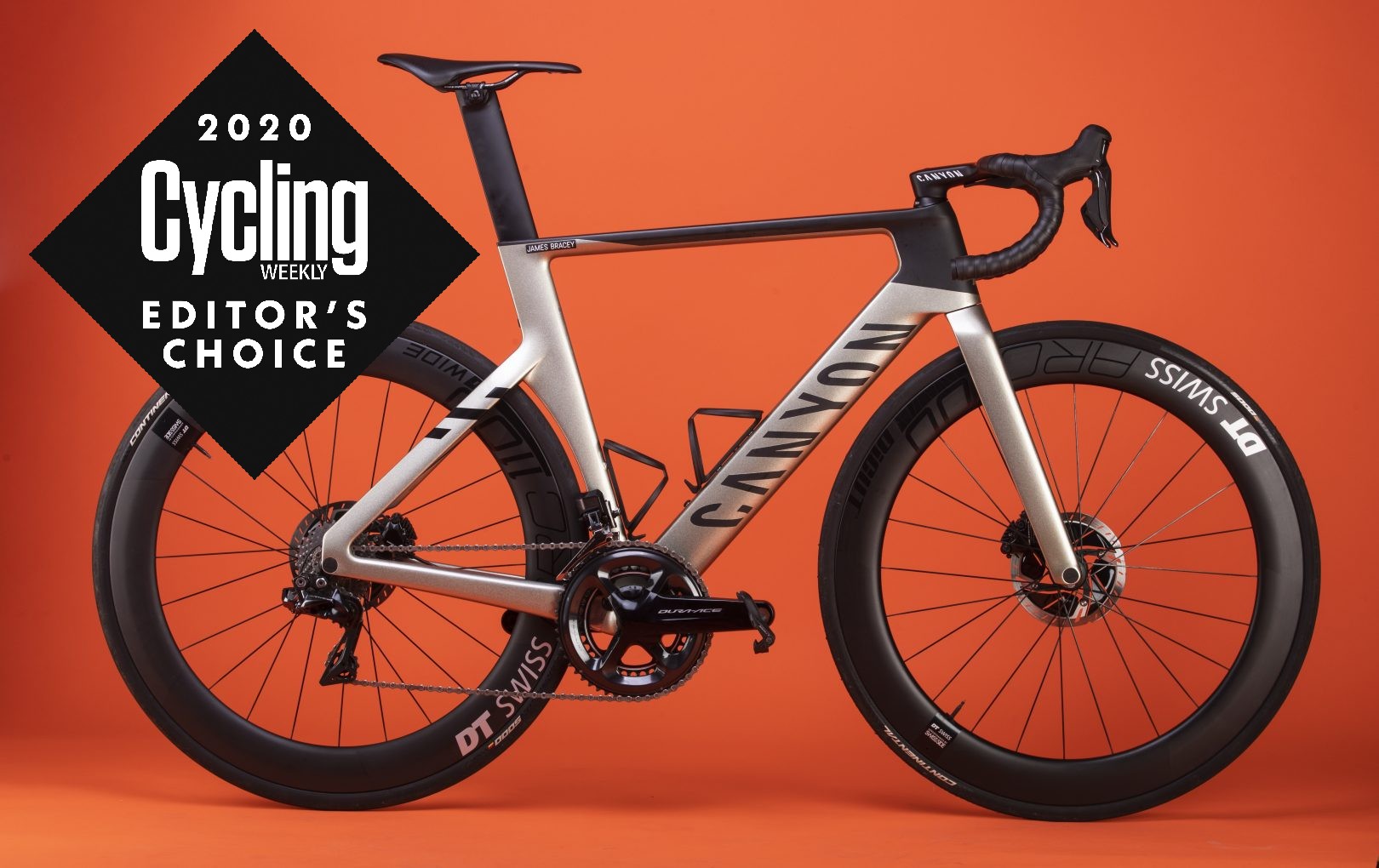
The new Aeroad CFR Disc Di2 is an impressive machine and exceeds the 'old' Aeroad in every aspect. It's rapid and is pleasingly comfortable for such an aero focussed race bike. A couple of years ago it would have achieved the perfect ten but Canyon's rivals have been busy and the Aeroad no longer stands out as being the best in the game - there are better.
-
+
Ride quality
-
+
Innovative front end
-
+
Value
-
-
Not the fastest or best handling
You can trust Cycling Weekly.

*Update February 8, 2021: Canyon responds to Aeroad seatpost concerns* - Canyon has received complaints over the seatpost on its 2021 Aeroad.
The Canyon Aeroad CFR was selected for an Editor's Choice award in 2020. This year's list contains 78 items which scored a 9 or 10/10 with our tech team - this gear is the best of the best, and has received the Cycling Weekly stamp of approval.
A lot has been published over the last few weeks regarding the highly anticipated arrival of this, the new Canyon Aeroad.
Over four years in development and countless testing protocols and prototypes has lead to Canyon finally replacing the six-year-old Aeroad. Whilst it still retains many of the features many admired in the old one there has been plenty of changes.
See the Canyon Aeroad range here
There are nine models in the new Aeroad range split into three frame quality levels. Whereas the old range topped out with the SLX frame, this new Aeroad incorporates Canyon's latest flagship CFR frame boasting its highest quality and lowest weights yet. I was lucky enough to test the top level CFR framed Aeroad and this Shimano Dura Ace Di2 specced model sits third from top, below the SRAM Red AXS and Campagnolo Super Record EPS equipped bikes.
Which Canyon road bike is right for me?
Frame
There has been noticeable changes to the Aeroad's frame when compared to the previous version. Put the two frames side by side and the most striking differences are the tube dimensions of the new Aeroad. Where the old version was stick-thin and slender the new Aeroad is all muscle. This is most obvious in the rear quarters of the frame with the seatstays and seat post displaying far more obvious aero influences.
The CFR frame differs from the lower SL and SLX frames in terms of its construction. It uses Toray's very highest quality M40X carbon fibres that are apparently 'ultra rare' but enable Canyon to strip back the amount of material needed to ensure adequate stiffness and strength; resulting in a much lighter frame. Canyon claim the CFR version of the Aeroad is over 160 grams lighter than the previous top end SLX frameset.
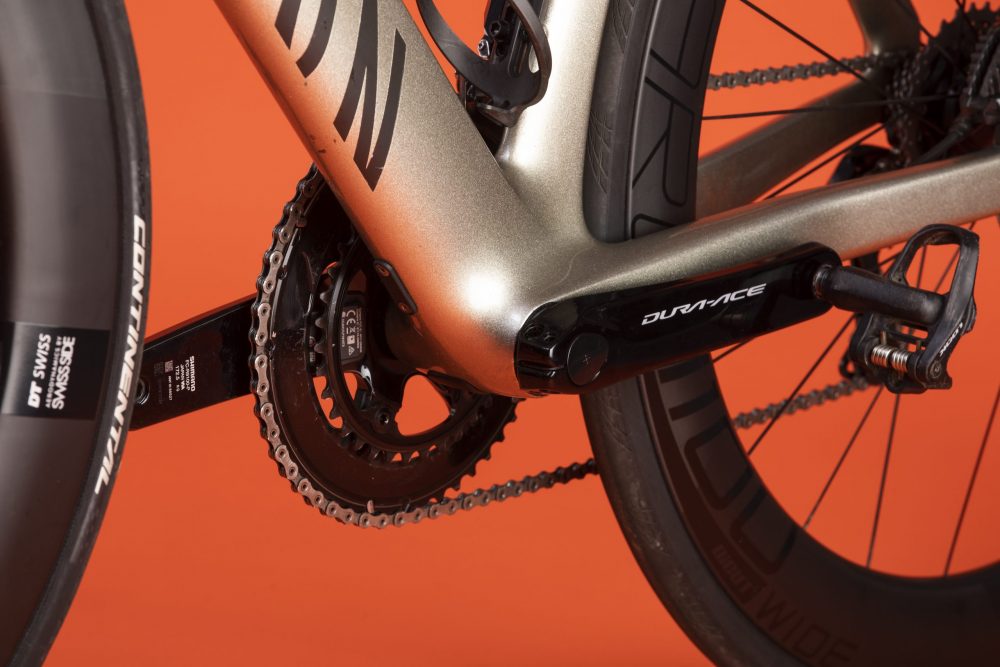
The new Aeroad has had some minor tweaks to the geometry to broaden the appeal and usability of the frame outside of just the purist racer. A few millimeters have been shaved from the reach on all frame sizes whilst the stack height has been marginally increased. These changes now mean the Aeroad mirrors the geometry of the Ultimate to bring a bit more homogeneity across Canyon’s road collection.
With the release of the first Aeroad Disc in 2017, Canyon had to extend the chainstay length over the rim brake Aeroad by 5mm, from 410mm to 415mm, to get the right chainline with wider rear hub spacings. This made the handling of the Disc version feel slightly slower when tested back to back with the rim brake bike. On the current generation of disc brake groupsets, extended chainstays are no longer required. That means Canyon could revert back to shorter 410mm chainstays across all sizes to guarantee the same levels of agility offered by the original rim brake Aeroad.
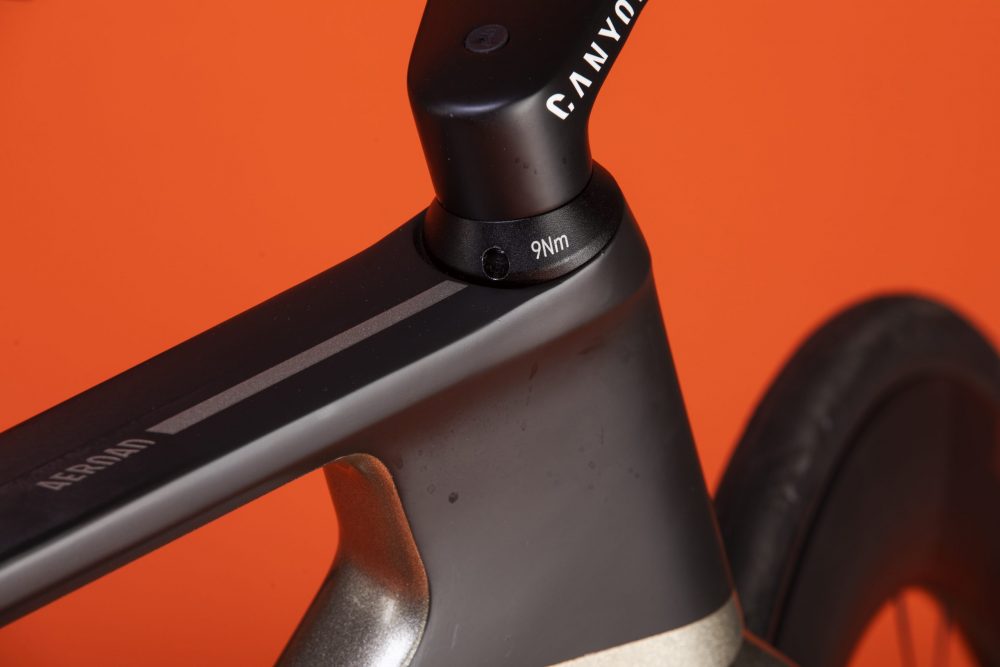
The front end is pretty special and Canyon deserve praise for its clever utilisation of existing 'old-school' tech which means the fork and headset are effectively a modern re-working of a traditional quill stem. This is great as it means you can adjust the height of the front end to suit a ride or race circuit without needing to cut the steerer or be left with an unsightly mass of spacers. A single hex bolt tightens the whole caboodle and adjustment is done using a threaded key.
As with most aero bikes released in 2020 tyre clearance has been a key factor. Canyon has increased the clearances and now there's room for 28mm tyres. In fact Canyon has now specced the Aeroad with a 28mm tyre out back to increase comfort and grip.
Components
A full Shimano Dura Ace Di2 groupset brings out the best in the Aeroad in terms of shifting. At this level Canyon also goes a little further and specs it with the Dura Ace power meter. This is dual sided and very discrete - I did have a few issues linking it to my usual Garmin head unit but this I suspect to be a one off as I've tested this system several times before with no issues.
Dura Ace brakes are some of the best in terms of lever feel and power however as soon as the weather went inclement I found the rotors made a lot of graunching noises and rubbed constantly. This isn't an issue exclusive to the Canyon Aeroad, I've experienced it on plenty of other similarly specced disc brake bikes.
One thing I couldn't fault was the spec of the wheels and tyres. DT Swiss ARC 1100 Dicut are stiff and fast and Continental Grand Prix 5000 tyres continue to impress with their speed and grip.
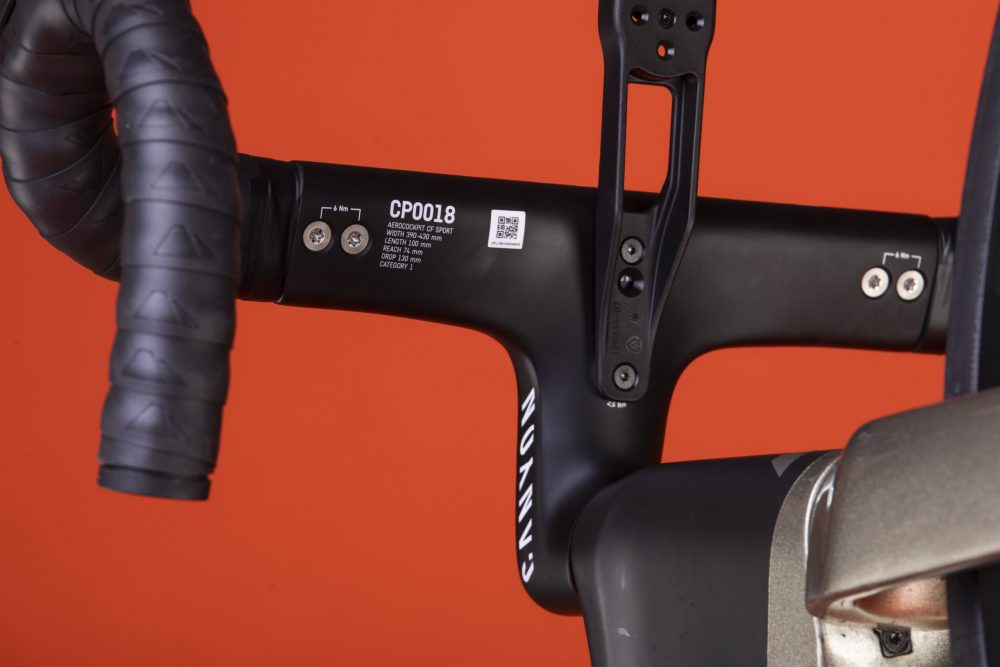
The spec standout has to be Canyon's latest integrated carbon bar and stem setup. The CP0018 (catchy name!) is lighter and has a better profile than its predecessor but the real magic of the package is the ability to alter the width of the bar. Twin bolts at the underside of the bar can be removed, allowing the outer 'wings' to slide in or out into one of three positions giving the rider the option to run a 39, 41 or 43cm bar width (and narrower on smaller sizes). This is genius and allows you to change your setup dependent upon your requirements for the ride ahead.
The Aeroad's seatpost is also not without its own unique take; it features a truncated design with the lower half - the part hidden from view - cut to half the dimensions of the exposed part. This lowers the overall weight as to be expected but also apparently increases compliance. I'm a little sceptical as it is clamped in place and then held at the toptube which I would expect will limit the actual amount of movement.
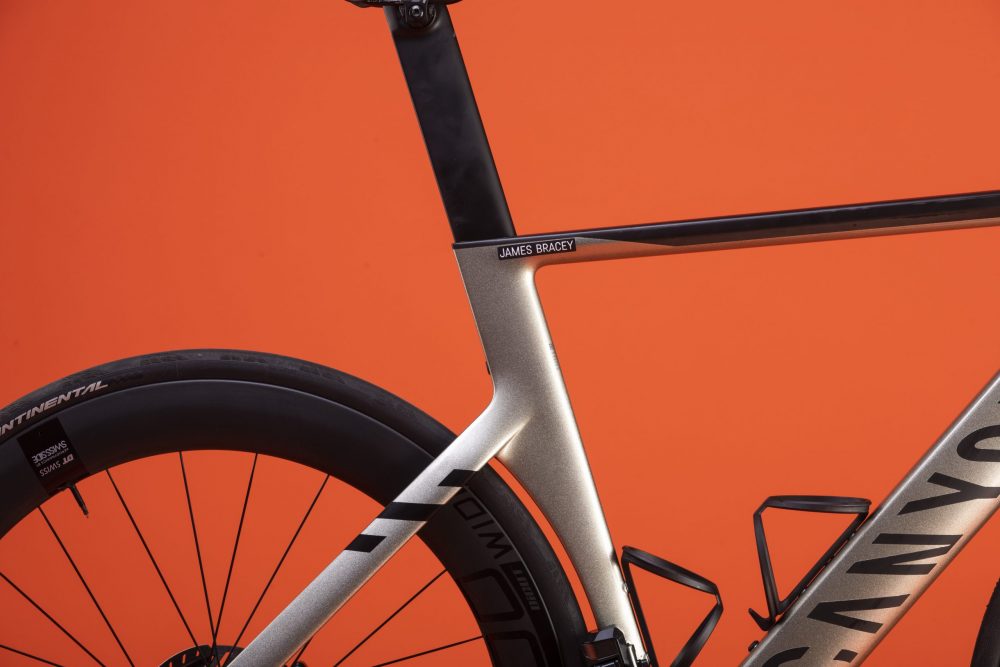
The ride
I have to say that although the new Aeroad certainly has the makings of an exceptional bike the ride wasn't one that took my breath away. Granted it does feel more together and stiffer than the outgoing version and there's no denying that the power transfer is almost second to none but I can't help but feel that many of the brands that Canyon left in its wake with the old Aeroad have now woken up and fired back with models that can certainly compete with the Aeroad in almost every aspect. And with this in mind it's not that I can fault the Aeroad in any way really - it really does achieve all the things Canyon wanted it to - it's just, dare I say.... there are now better bikes on the market. This is a very good bike, it's just not as mould breaking as it was on the release of the original Aeroad. The competition has caught up.
If I was to compare it to any bike I have tested recently it would be Merida's Reacto (which I scored a perfect 10/10). The Recacto now holds up as my benchmark for how an aerobike can fill you with pure joy in terms of the absolute effortless speed it provides you, also helping you to maintain it throughout a ride. In comparison the Aeroad just felt a little laboured and required more rider power to maintain the higher speeds it is capable of. For reference both bikes came specced with the same tyres and similar weight and depth carbon wheels. It certainly isn't slow and I would be more than happy to ride and race the Aeroad and for more powerful riders and sprinters the most impressive feature is the insane power transfer. Stand on the pedals and you can feel that all of your effort is being translated into forward momentum.
The handling is also razor sharp and more go-kart than grand tourer in terms of steering response. You can slip it through the tiniest gap and rail corners as fast as your bravery and tyres will let you. But be warned, this fast handling can bite if descending at speed as side winds can affect your stability quite noticeably - especially when running the bars at their narrowest.
It's good to see Canyon has followed other brands in terms of making its aero bike more comfortable and this Aeroad loses nothing in comfort even when compared to many 'normal' race bikes. A big part of this has to be attributed to the larger volume rubber Canyon has specced on the Aeroad but either way the elevated comfort level is much appreciated.
How do we score products? Check out the scale here

Thank you for reading 20 articles this month* Join now for unlimited access
Enjoy your first month for just £1 / $1 / €1
*Read 5 free articles per month without a subscription

Join now for unlimited access
Try first month for just £1 / $1 / €1
Get The Leadout Newsletter
The latest race content, interviews, features, reviews and expert buying guides, direct to your inbox!
James Bracey's career has seen him move from geography teacher, to MBR writer, to Cycling Weekly's senior tech writer and video presenter. He possesses an in-depth knowledge of bicycle mechanics, as well as bike fit and coaching qualifications. Bracey enjoys all manner of cycling, from road to gravel and mountain biking.
-
 'One of the hardest races I've ever done in my life' - Tadej Pogačar finishes runner-up on Paris-Roubaix debut after crash
'One of the hardest races I've ever done in my life' - Tadej Pogačar finishes runner-up on Paris-Roubaix debut after crashWorld champion reacts to 'extremely hard' battle with Mathieu van der Poel
By Tom Davidson Published
-
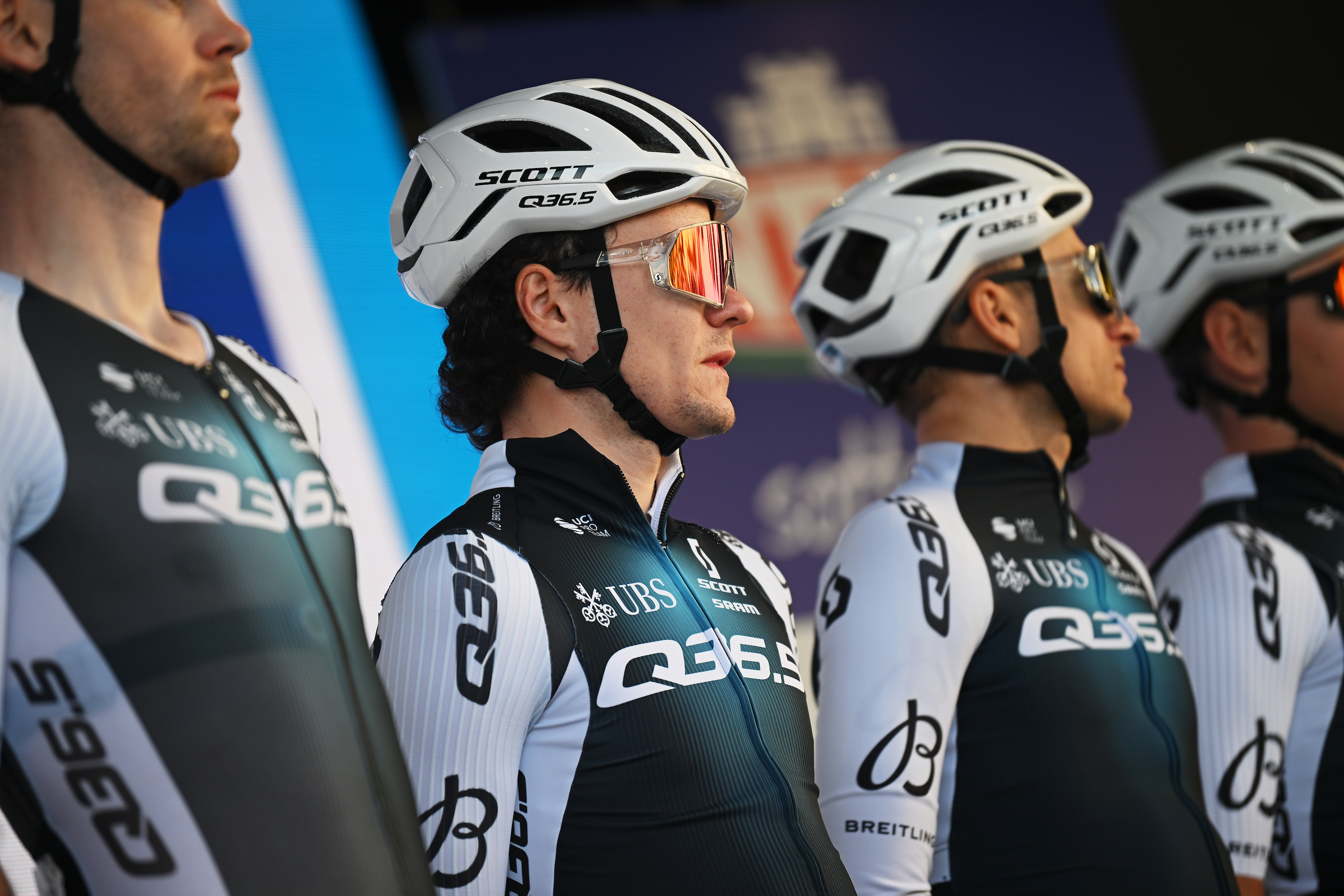 'I thought it would be dark by the time I got here' - Joey Pidcock, the last rider to finish Paris-Roubaix, on his brutal day out
'I thought it would be dark by the time I got here' - Joey Pidcock, the last rider to finish Paris-Roubaix, on his brutal day outQ36.5 rider finishes outside time limit, but still completes race with lap of the Roubaix Velodrome
By Adam Becket Published
-
 The stats behind Mathieu van der Poel’s record-breaking Roubaix success
The stats behind Mathieu van der Poel’s record-breaking Roubaix successThe Dutchman's eighth success in a Monument underlined his standing among the Classics greats
By Peter Cossins Published